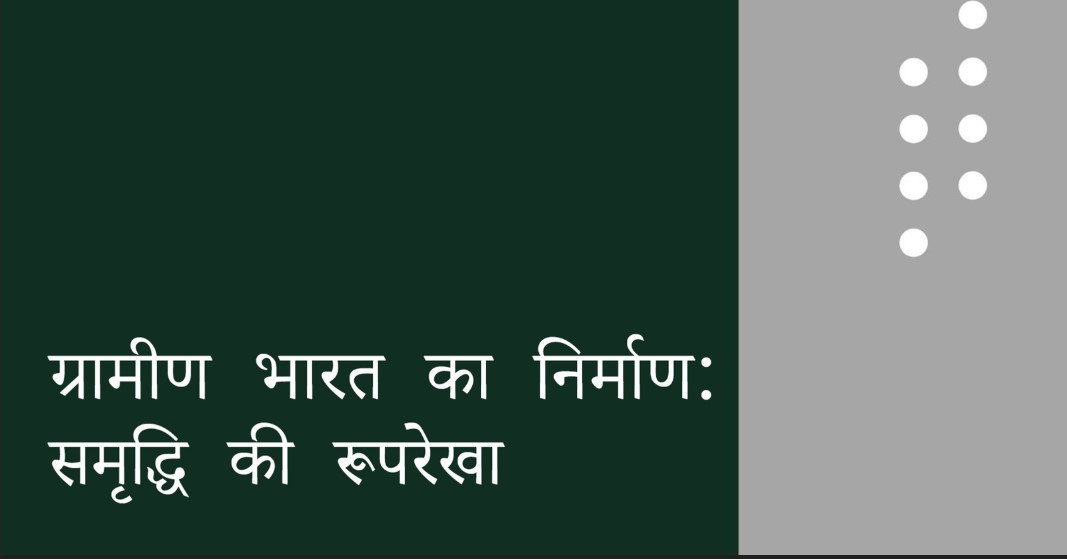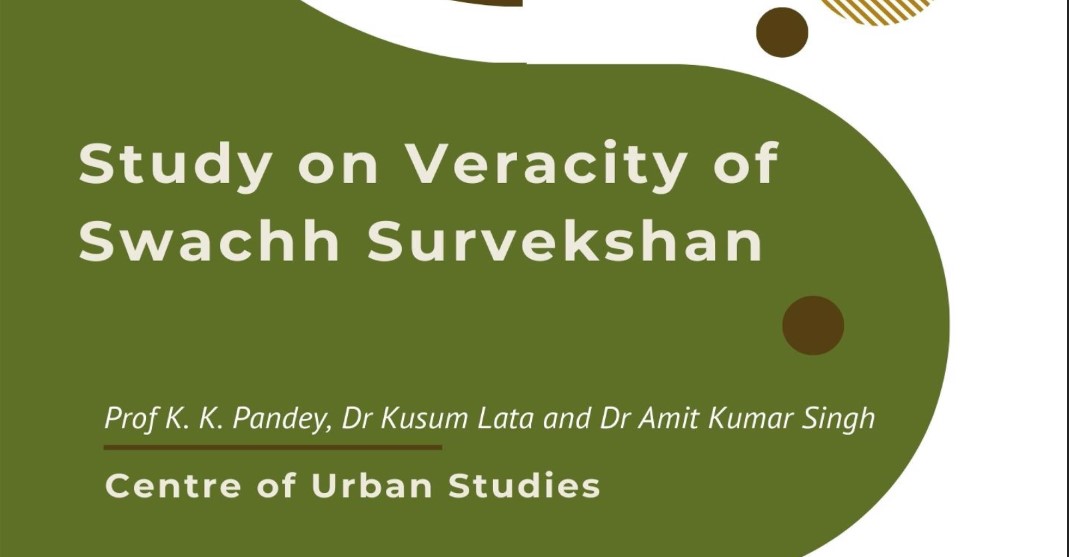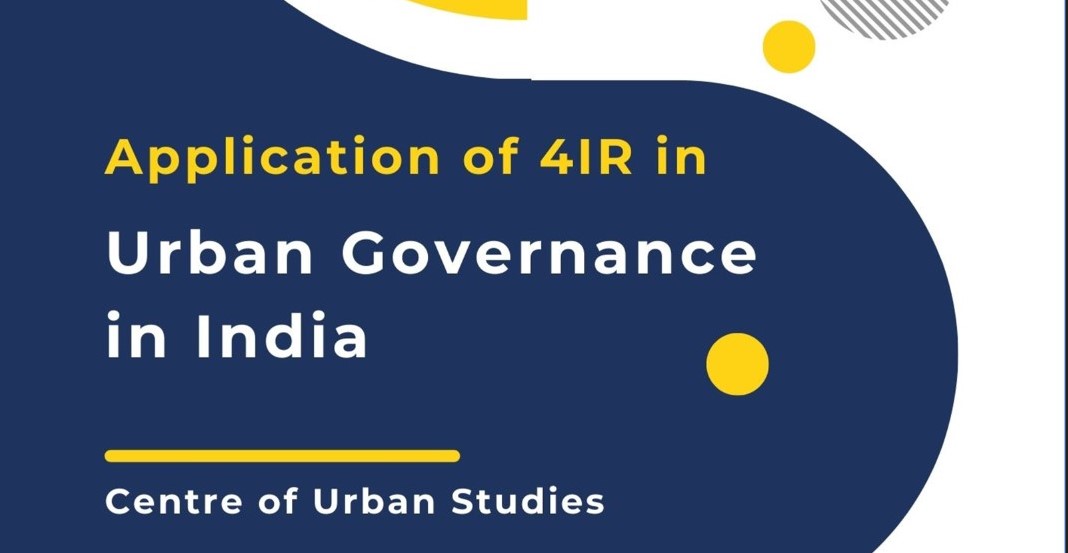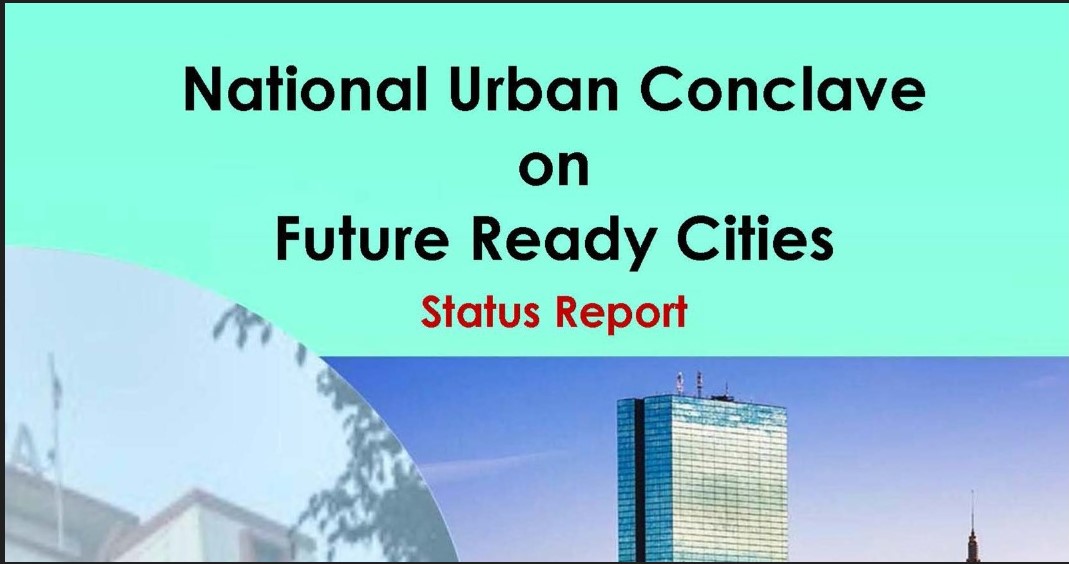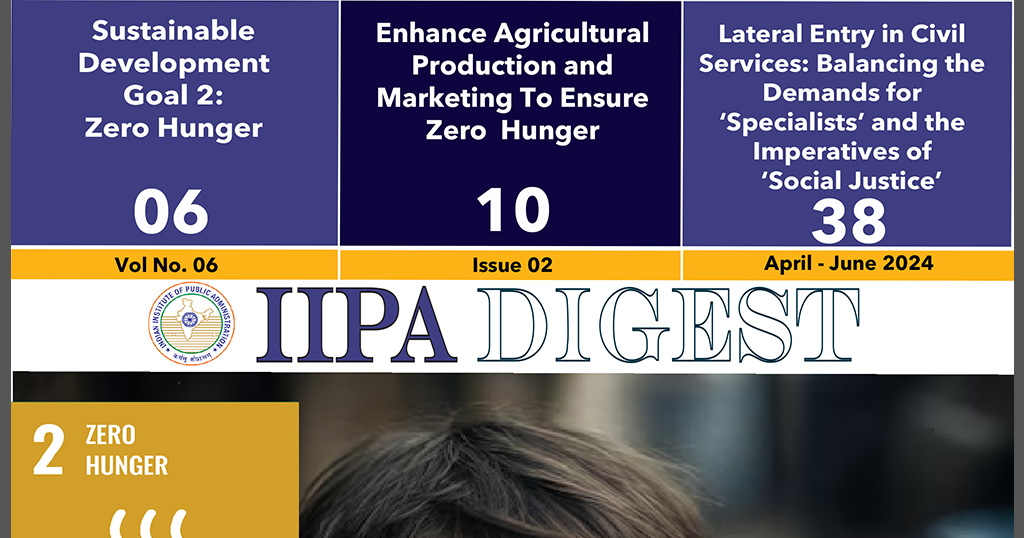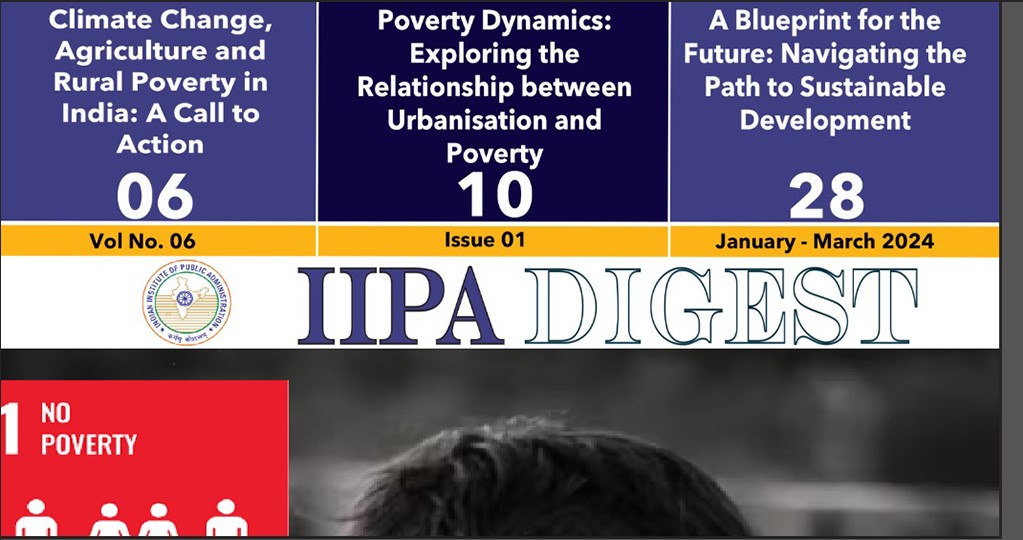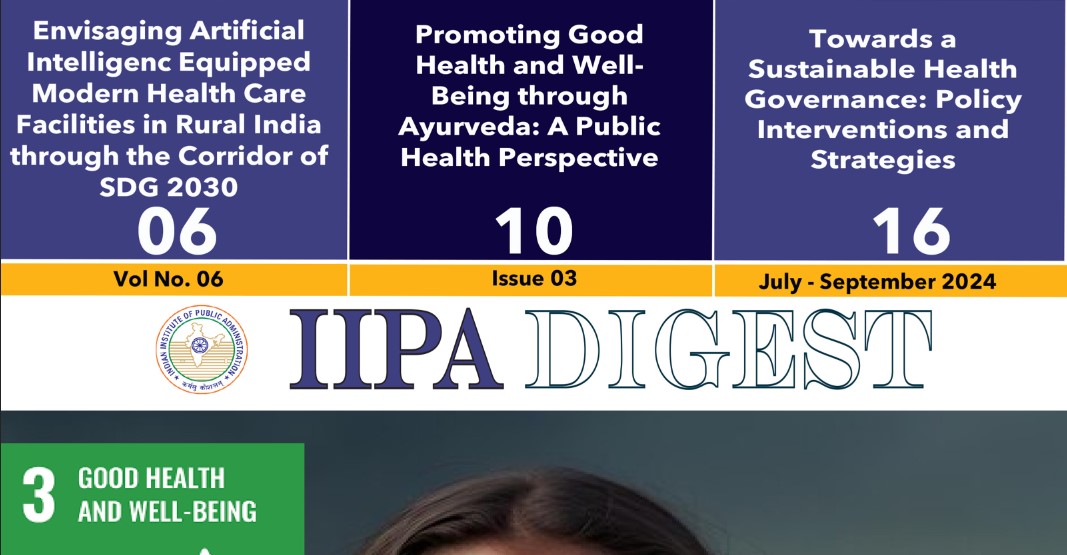Multidimensional Poverty In India: Some Recent Evidence
Poverty is pronounced deprivation in well-being. Poverty anywhere is a threat to prosperity everywhere. Since independence, defining a poverty line has been a debatable issue. During1970s, first such poverty line concept in India came into existence. Generally, poverty measures in India are money metric in nature and calculated according to a threshold level of MPCE. The connotation of poverty has changed over the years to adjust the measures of poverty line and poverty ratio. The constitution of a Working Group (1962), the Alagh Committee (1979), Lakdawala Committee (1989), Tendulkar Committee (2005), and Rangarajan Committee (2009) contributed to redefining poverty in the country, particularly those of the poor (Government of India, 2009). Multidimensional poverty measures poverty from multiple perspective in terms of education, health, standard of living, etc, and also involves nonmetric measures in terms of access and deprivation of basic necessities of life (Alkire and Foster, 2011). The paper studies evolution of poverty and number of poor people population since independence till date for India and compares with recent multidimensional poverty statistics of best performing states of India.
Poverty in India
All round growth of Indian economy began in 1947 and accelerated during the post-independence era in the 1950s, with the introduction of planned development. Balanced regional development helps in poverty alleviation as fruits of growth reach the all sections of population and gap between rich and poor diminishes gradually. Tendulkar Committee Report (2005) and several subsequent national Sample Survey Organisations’ survey results outline estimates of poverty for state and nation. Poverty is denoted in terms of poverty line and head count ratio. The poverty lines for the state are estimated at Rs.695 for rural and Rs.861 for urban areas by 2011-12. 25.7% of rural population and 13.7% of rural population were below poverty line in India by 2011-12. It is worth noting that, India saw 15 percentage points poverty reduction and average annual decline in poverty for the country was 2.14 percentage points during the same period (Government of India, 2009). Several welfare measures with targeted interventions have led to achievement of fastest poverty reduction and India is targeting to eliminate poverty by 2030 as per target of Sustainable Development Goal 1. Percentage of poor population in India (Rural and Urban) from 1973 to 2012 is given in Table 1.
In 1973-74, 56.44% of rural people were poor, which declined to 53.07% (1977-78), to 45.65% (1983), to 39.09% (1987-88), to 37.27% (1993-94) and further declined to 25.7% (2004-05). Similar trend is seen in case of urban poor. Several welfare measures with targeted interventions have led to achievement of fastest poverty reduction and country is targeting to eliminate poverty.
Multidimensional Poverty Index of India
Government of India’s premier thinktank NITI Aayog, New Delhi has published ‘National Multidimensional Poverty Index – A Progress Review 2023’ in July 2023 (NITI Aayog, 2023). India’s first ever multidimensional poverty index measure based NFHS Round 4 data (2015-16) was published in November 2021. The progress review report is based NFHS Round 5 data (2019-21). The multidimensional poverty index covers overlapping deprivations in health, education and basic standards of living. The non-money metric measures complement money-metric poverty measurements because it measures and compares deprivations directly on the basis of several aspects of development (Alkire and Foster, 2011).
The Global Agenda 2030 for Sustainable Development was signed on September 25, 2015 by 193 member nations of the UN. The agenda established the 17 Sustainable Development Goals (SDG), 169 targets and 232 indicators. SDG 1 and Target 1.2 calls for Ending poverty in all its forms everywhere. The goal is multidimensional in its totality. Multidimensional poverty index has wide ranging application for any country in terms of development of schemes and targeted interventions which contribute towards elimination of poverty in all its forms from everywhere in the world. The district-wise estimation of multidimensional poverty will help in identifying deprived districts based on these indicators and accordingly policies can be planned and implemented for reaching the goal of Left No One Behind by the year 2030.
NITI Aayog has prepared this index with consultation with Ministries of Union Government. The index has 3 equally weighted dimensions namely, Health, Education and Basic Living Standard. These three dimensions are measured by 12 indicators listed below.
i. Nutrition
ii. Child and adolescent mortality
iii. Maternal health
iv. Years of schooling
v. School attendance
vi. Cooking fuel
vii. Sanitation
viii. Drinking water
ix. Electricity
x. Housing
xi. Assets
xii. Bank account
As per the progress review report, the share of percentage people who are multidimensionally poor has declined from 24.85% in 2015-16 to 14.96% in 2019-21. Among the states, Kerala has lowest poverty (0.55%) and Bihar has highest poverty (33.76%). This review report is based on NFHS Round V data (2019-21) (IIPA, 2021). Percentage of population who are poor in these 12 indicators in all states and union territories of India is given in Table 2.
India has witnessed significant reduction in multidimensional poverty. Government of India is targeting to reduce multidimensional poverty to 7% by the end of 2025 and end multidimensional poverty by 2030 as per SDG Target 1.2. Government of India is adopting many pro-poor welfare measures and interventions like PM Garib Kalyan Anna Yojana, Ayushman Bharat, Ujjwala, PM Awas Yojana, SWANIDHI, Jal Jeevan Mission, Aatm Nirbhar Bharat, Smart City Mission, Make in India, Digital India, Skill India, etc. among others in this direction.
Among other accomplishments in SDG, the achievements of India are remarkable in the domain of elimination of poverty in the last decade. Improvement in social sector indicators, elimination of all forms of poverty, hunger, malnutrition and provision of basic standards of living will lead to achievement of 2030 agenda of Sustainable Development in India.
If we analyse indicator score, it can be said that low nutrition, less access to safe cooking fuel, less sanitation coverage and less housing coverage are contributing towards high multidimensional poverty. However, indicators like child and adolescent mortality, school attendance, and bank account are performing well in comparison to other indicators. Government of India is putting utmost focus and allocating significant fund in concerned areas. India has achieved significant reduction in infant mortality rate and maternal mortality ratio in the country. Data driven governance and real time monitoring of schemes and programmes will certainly be helpful in achieving required targets and objectives.
Lowest MPI States
It is very interesting to observe lowest multidimensional poverty states like Kerala, Tamil Nadu and Punjab. Indicator wise score lowest MPI states between two latest rounds of NFHS is outlined below:
Recent Evidence on MPI
24.82 crore people escaped multidimensional poverty in last nine years. Findings of NITI Aayog’s Discussion Paper ‘Multidimensional Poverty in India since 2005-06’ give credit for this remarkable achievement to significant initiatives of the government to address all dimensions of the poverty between 2013-14 to 2022-23.
According to the Discussion Paper, India has registered a significant decline in multidimensional poverty in India from 29.17% in 2013-14 to 11.28% in 2022- 23 i.e. a reduction of 17.89 percentage points. Uttar Pradesh registered the largest decline in the number of poor with 5.94 crore people escaping multidimensional poverty during the last nine years followed by Bihar at 3.77 crore, Madhya Pradesh at 2.30 crore and Rajasthan at 1.87 crore.
The paper also shows that the pace of decline in poverty headcount ratio using exponential method was much faster between 2015-16 to 2019-21 (10.66% annual rate of decline) compared to period 2005-06 to 2015-16 (7.69% annual rate of decline). All 12 indicators of MPI have recorded significant improvement during the entire study period. To assess the poverty levels in the year 2013-14 against the current scenario (i.e. for the year 2022-23), projected estimates have been used due to data limitations for these specific periods.
Significant initiatives covering all dimensions of poverty have led to 24.82 crore individuals escaping multidimensional poverty in the last 9 years. As a result, India is likely to achieve its SDG target of halving multidimensional poverty well before 2030. The Government's persistent dedication and resolute commitment to enhancing the lives of the most vulnerable and deprived have been instrumental in this accomplishment.
Government of India has made remarkable progress in improving the lives of people, aiming to reduce poverty in all dimensions. Noteworthy initiatives like Poshan Abhiyan and Anemia Mukt Bharat have significantly enhanced access to healthcare facilities, leading to a substantial decrease in deprivation. Operating one of the world's largest food security programmes, the Targeted Public Distribution System under the National Food Security Act covers 81.35 crore beneficiaries, providing food-grains to rural and urban populations. Recent decisions, such as extending free foodgrain distribution under Pradhan Mantri Garib Kalyan Anna Yojana for another five years, exemplify Government's commitment. Various programmes addressing maternal health, clean cooking fuel distribution through Ujjwala Yojana, improved electricity coverage via Saubhagya, and transformative campaigns like Swachh Bharat Mission and Jal Jeevan Mission have collectively elevated living conditions and overall well-being of people. Additionally, flagship programmes like Pradhan Mantri Jan Dhan Yojana and PM Awas Yojana have played pivotal roles in financial inclusion and providing safe housing for the underprivileged.
While the performance of States varies, some States which were traditionally having high poverty levels, have made remarkable progress in helping people escape poverty, thus reducing inter-state disparities in multidimensional poverty. With this, the fundamental problems in accessing basic services are getting resolved fast so that the country can look towards becoming a developed nation i.e. Viksit Bharat @2047.
Conclusion
NITI Aayog has published ‘National Multidimensional Poverty Index – A Progress Review 2023’. As per the progress review report, the share of India’s population which is multidimensionally poor has declined from 24.85% in 2015-16 to 14.96% in 2019-21. Among states, Kerala has lowest poverty (0.55%) and Bihar has highest poverty (33.76%). This index is based on the NFHS Round 5 data (2019-21). India has witnessed significant reduction in multidimensional poverty. Government of India is targeting to reduce multidimensional poverty to 7% by the end of 2025 and end multidimensional poverty by 2030 as per SDG Target 1.2. Government of India is adopting many pro-poor welfare measures and interventions like PM Garib Kalyan Anna Yojana, Ayushman Bharat, Ujjwala, PM Awas Yojana, SWANIDHI, Jal Jeevan Mission, Aatm Nirbhar Bharat, Smart City Mission, Make in India, Digital India, Skill India, etc, among others in this direction. Improvement in social sector indicators, elimination of all forms of poverty, hunger, malnutrition and provision of basic standards of living will lead to achievement of 2030 agenda of Sustainable Development in India. While the performance of States varies, some States which were traditionally having high poverty have made remarkable progress in helping people escape poverty, thus reducing inter-state disparities in multidimensional poverty. With this, the fundamental problems in accessing basic services are getting resolved fast so that the country can look towards becoming a developed nation i.e. Viksit Bharat @2047.
Leave a comment
More articles from Urban & Rural Areas
